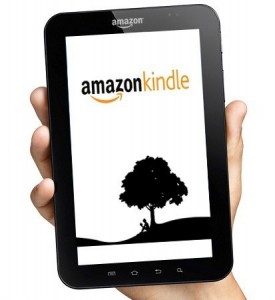 While you can definitely grab whatever eBooks you might be interested in reading directly through your Kindle‘s connection to Amazon.com, there is no denying that you can get all the information you need about a potential buy more easily by pulling it up on your computer’s web browser. Part of that is the E Ink screen, with its associated monochrome display and slow refresh rate. Apparently this is a big problem across the board with mobile devices, however. Research has been done that indicates that the majority of shopping is done from desktop computers or laptops rather than more portable devices. Those tend to be a less successful avenue for sales efforts so far.
While you can definitely grab whatever eBooks you might be interested in reading directly through your Kindle‘s connection to Amazon.com, there is no denying that you can get all the information you need about a potential buy more easily by pulling it up on your computer’s web browser. Part of that is the E Ink screen, with its associated monochrome display and slow refresh rate. Apparently this is a big problem across the board with mobile devices, however. Research has been done that indicates that the majority of shopping is done from desktop computers or laptops rather than more portable devices. Those tend to be a less successful avenue for sales efforts so far.
This is part of why the Kindle Tablet seems to be such an integral part to the future of Amazon and other online retailers. While the trend is likely to take a long while, there are indications that we are moving into something of a post-PC marketplace. At least as far as daily home use is concerned. If you’re on a computer, you tend to be at the computer with a significant portion of your attention directed at it. With a tablet or a smartphone, you can simply be on the internet while doing something completely unrelated. Plenty of people already have trouble going anywhere without being connected.
It is hard to pin down precisely why the online shopping experience hasn’t quite kept up for people, but Jeff Bezos had some comments on the subject a short time ago. He said, among other things, that at present browsing on a smartphone tends to be “a marginal experience in many cases”. This is a temporary thing, of course. As smartphones and tablets advance, they get more powerful, more versatile, and generally more enjoyable in every way. At the same time, web developers are learning more ways to accommodate these browsers and the many non-PC features that they bring to the browsing experience. Learn how to open EPUB file.
The acknowledgement of the situation is important in understanding the potential for the Kindle Tablet. Yes, it is likely to be placed as something extending the Kindle eReader line. More important, however, is its extension of the Amazon.com website. Call it a bridge between the Kindle and Amazon.com, maybe. There is going to be a huge advantage for Amazon in that they will not only be controlling their own app ecosystem in the form of the Amazon Android App Store, but also offering their entire website in a form that is perfectly compatible with the tablet people are browsing on. After all, the company itself is involved as every stage at this point so they can make sure it all works smoothly. They know what the device, or devices, can do. They know what changes need to be made to make everything show up smoothly. There is even the possibility of a customized front end specifically for tablet user browsers. Even leaving aside considerations of a Kindle Phone or any Kindle Tablet option with 3G access and the advantage that Amazon would gain by connecting their users to the site 24/7, this looks good.
“There is even the possibility of a customized front end specifically for tablet user browsers.”
That idea popped into my head two days ago, but I put it aside as being technically difficult and perhaps too early. And yet–now that you mention it and I’ve thought about it again–it’s just the sort of smart chess-move that Bezos would have plotted years ago! So it could happen sooner than we think. (And I hope it’ll work for the Kindle as well as tablets.)
Maybe this potential to capture the mobile market is part of the reason the stock’s P/E ratio is high.
What else would a souped-up Kindle (touchscreen, color) do than make a great device for online shopping?
I wonder if Amazon will consider giving customers a small standing discount for buying any products from Amazon.com on these upcoming Kindle tablets – as a way to reward customer loyalty as well as build a captive audience?